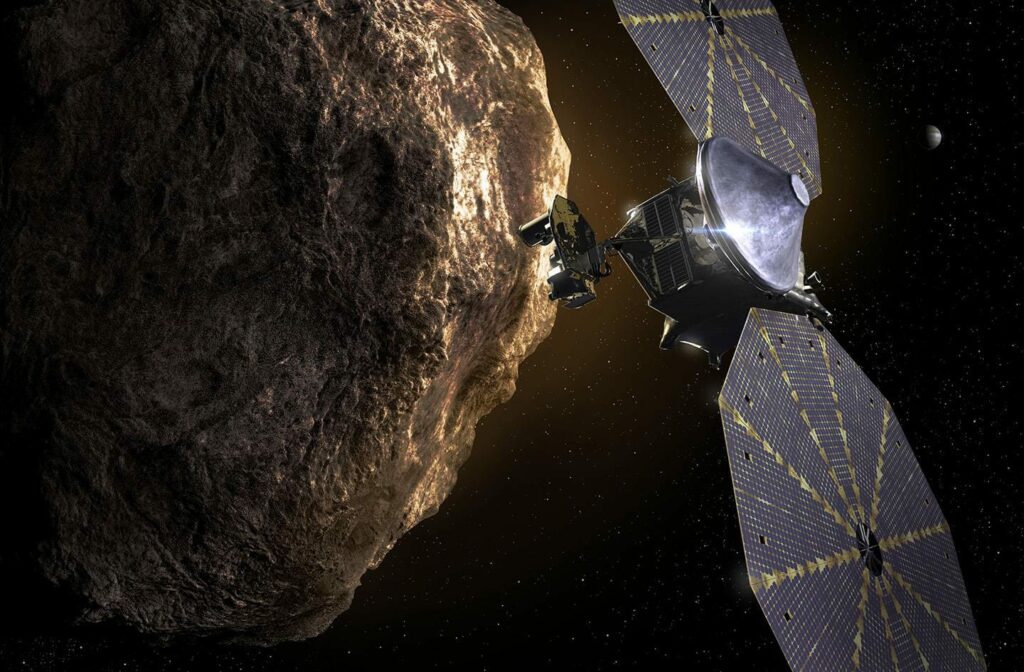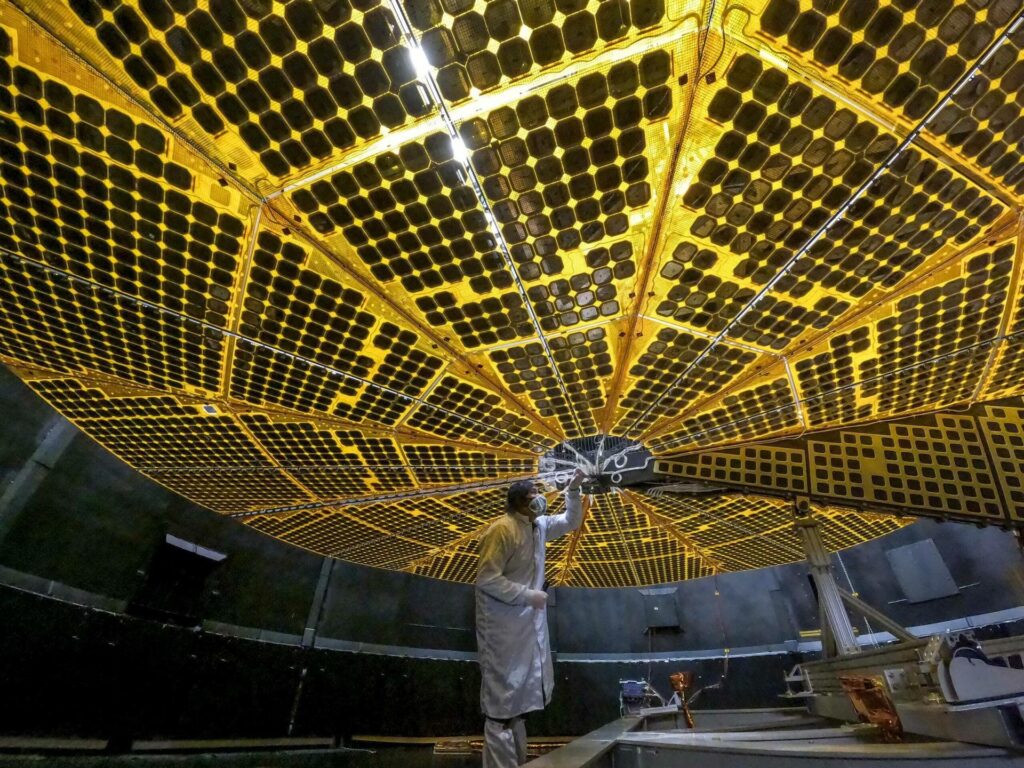In the period from May 9 to June 2, NASA specialists made four attempts to fully open the jammed solar array of the Lucy device. They led to partial success, allowing us to hope that the problem will not affect the further course of the mission.
Lucy Mission Problems
The Lucy device receives energy from two round solar arrays with a diameter of 7.3 m with a total surface area of over 80 m2. During the launch, they were in a folded state, their deployment began after the probe went into space and was carried out according to the fan principle.

Unfortunately, during the opening, one of the arrays could not snap. During the subsequent investigation, NASA engineers determined that it turned only 345°. The cause of the failure was the loss of tension in one of the cables of the array opening mechanism. According to engineers, from 50 to 100 cm of the cable remained unstrung.
Even with incomplete disclosure, Lucy solar arrays generate over 90% of the planned energy level, which is enough to fulfill all mission objectives. The main concerns of engineers are related to the fact that a non-latched array may affect the structural stability of the probe during upcoming maneuvers using the main engine. Therefore, they developed a plan to disclose the problematic segment.
Lucy solar arrays are equipped with two motors (main and backup) for pulling cables. Mission engineers decided to take advantage of this circumstance and activate both engines simultaneously to create a stronger torque. Ground tests have shown that this may be enough to pull the cable to the remaining distance required to fix the solar array.
Attempts to deploy Lucy solar arrays
The first attempt to fully deploy the array took place on May 9. To avoid overheating, the motors started for short intervals. Although the solar array could not be fully disclosed, subsequent analysis of telemetry showed that the deployment was similar to ground tests.

Therefore, the mission management decided to continue. The next three engine starts took place on May 12, May 26 and June 2. Although the array could not be snapped, it was able to be moved to a more stable position, which increases the chances that the problem will not have any effect on the subsequent course of the mission. According to the engineers, they have several more opportunities to repeat the deployment commands, which will further stabilize the array and minimize risks.
It is also worth noting that on June 7, Lucy performed a trajectory correction. This is the first of a series of maneuvers that the device will perform in preparation for the flyby of the Earth, scheduled for October 16, 2022.
Recall that Lucy recently photographed a lunar eclipse.
According to https://blogs.nasa.gov
Follow us on Twitter to get the most interesting space news in time
https://twitter.com/ust_magazine
